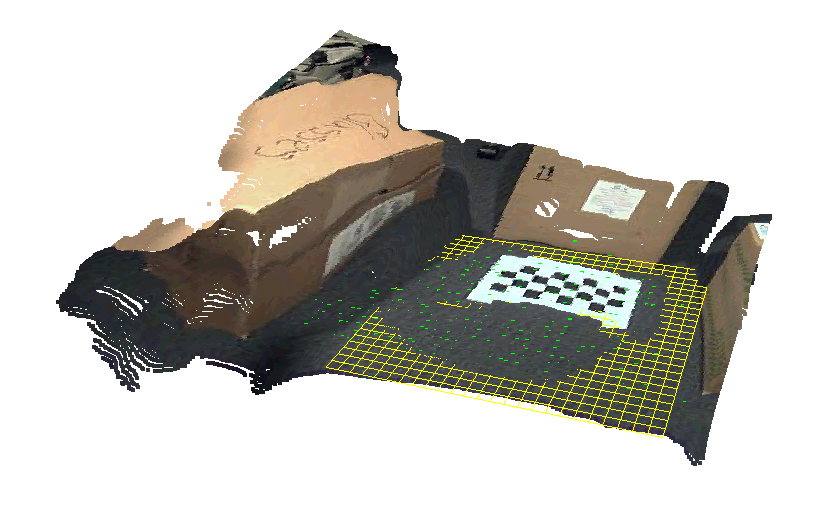 For those of you still interested, I’ve made the move to using Qt and QGLViewer in the SfM-Toy-Lib project. Getting rid of PCL dependency (I think it’s a bloated library), and burying FLTK long in the past, I feel much better about it now.
For those of you still interested, I’ve made the move to using Qt and QGLViewer in the SfM-Toy-Lib project. Getting rid of PCL dependency (I think it’s a bloated library), and burying FLTK long in the past, I feel much better about it now.
Get it on github: https://github.com/royshil/SfM-Toy-Library
Tag: sfm
Hi
I’ve been working feverishly to straighten up the Structure from Motion Toy Library, and make it more robust. During my experiments with different methods I wanted to test out a different method for decomposing the Essential matrix to rotation R and translation t, other than that of Hartley and Zisserman using SVD. That’s when I came upon this paper: here by Berthold Horn from 1990, that traces the steps of Longuet-Higgins who came up with the derivation for the Essential matrix. It has a closed form solution that works pretty well, and here it is implemented with the Eigen math library (a very good library to get to know).

 Hello
Hello
This time I’ll discuss a basic implementation of a Structure from Motion method, following the steps Hartley and Zisserman show in “The Bible” book: “Multiple View Geometry”. I will show how simply their linear method can be implemented in OpenCV.
I treat this as a kind of tutorial, or a toy example, of how to perform Structure from Motion in OpenCV.
See related posts on using Qt instead of FLTK, triangulation and decomposing the essential matrix.
Update 2017: For a more in-depth tutorial see the new Mastering OpenCV book, chapter 3. Also see a recent post on upgrading to OpenCV3.
Let’s get down to business…

 Hi
Hi
I sense that a lot of people are looking for a simple triangulation method with OpenCV, when they have two images and matching features.
While OpenCV contains the function cvTriangulatePoints in the triangulation.cpp file, it is not documented, and uses the arcane C API.
Luckily, Hartley and Zisserman describe in their excellent book “Multiple View Geometry” (in many cases considered to be “The Bible” of 3D reconstruction), a simple method for linear triangulation. This method is actually discussed earlier in Hartley’s article “Triangulation“.
I implemented it using the new OpenCV 2.3+ C++ API, which makes it super easy, and here it is before you.
Edit (4/25/2015): In a new post I am using OpenCV’s cv::triangulatePoints() function. The code is available online in a gist.
Edit (6/5/2014): See some of my more recent work on structure from motion in this post on SfM and that post on the recent Qt GUI and SfM library.
Update 2017: See the new Mastering OpenCV3 book with a deeper discussion, and a more recent post on the implications of using OpenCV3 for SfM.
 Hi
Hi
Been working hard at a project for school the past month, implementing one of the more interesting works I’ve seen in the AR arena: Parallel Tracking and Mapping (PTAM) [PDF]. This is a work by George Klein [homepage] and David Murray from Oxford university, presented in ISMAR 2007.
When I first saw it on youtube [link] I immediately saw the immense potential – mobile markerless augmented reality. I thought I should get to know this work a bit more closely, so I chose to implement it as a part of advanced computer vision course, given by Dr. Lior Wolf [link] at TAU.
The work is very extensive, and clearly is a result of deep research in the field, so I set to achieve a few selected features: Stereo initialization, Tracking, and small map upkeeping. I chose not to implement relocalization and full map handling.
This post is kind of a tutorial for 3D reconstruction with OpenCV 2.0. I will show practical use of the functions in cvtriangulation.cpp, which are not documented and in fact incomplete. Furthermore I’ll show how to easily combine OpenCV and OpenGL for 3D augmentations, a thing which is only briefly described in the docs or online.
Here are the step I took and things I learned in the process of implementing the work.
Update: A nice patch by yazor fixes the video mismatching – thanks! and also a nice application by Zentium called “iKat” is doing some kick-ass mobile markerless augmented reality.